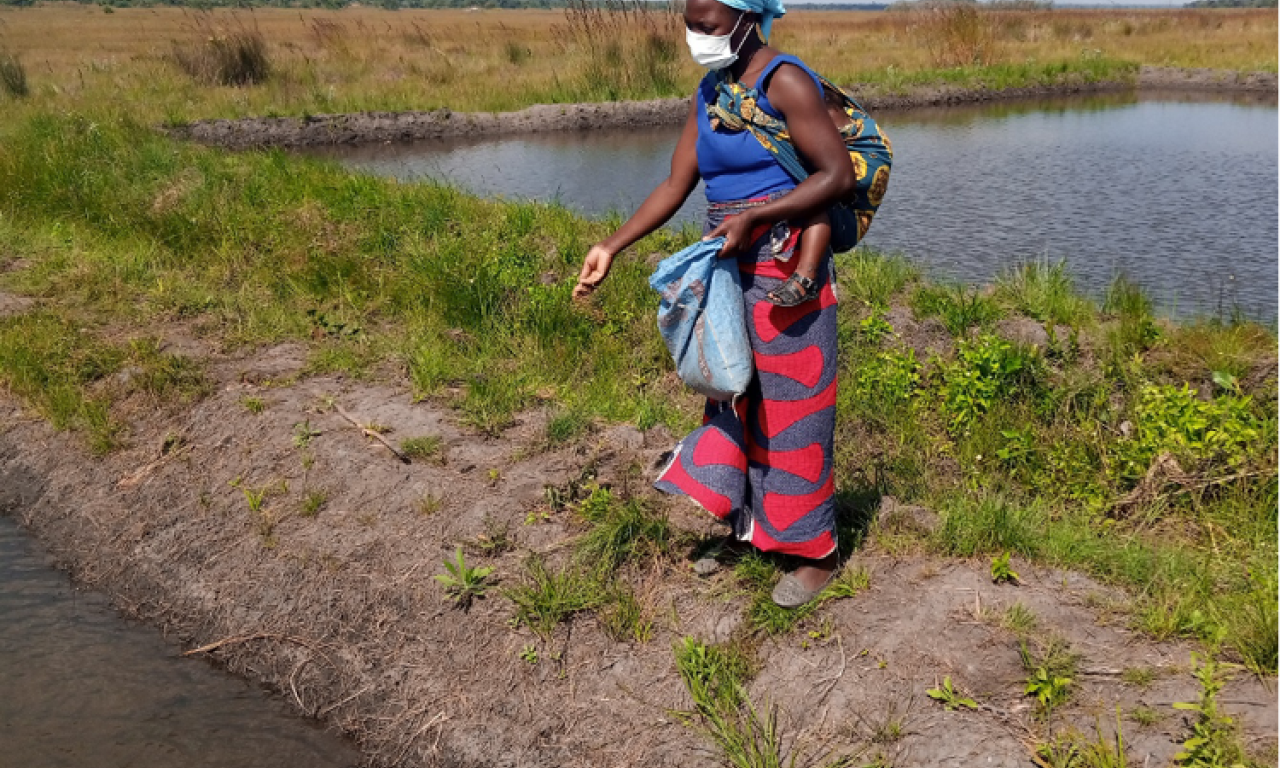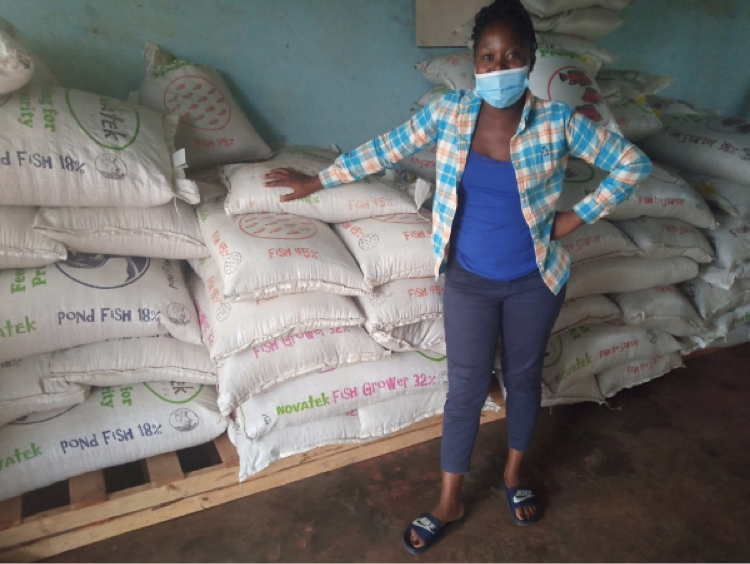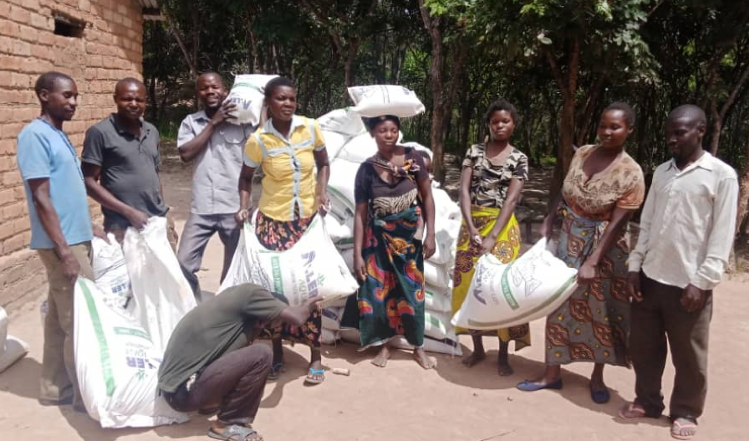
- Pro-poor and inclusive last-mile fish feed business models were established in Northern and Luapula provinces in Zambia to supply high-quality fish feed and knowledge to smallholder farmers
- To ensure long-term economic sustainability, the feed entrepreneurs co-financed 30 percent of the fish feed cost, and the project covered the remaining 70 percent
- Within six months of selling feed at market prices, the ten feed businesses involved in the project earned a total revenue of ZMW 262,948 (USD 15,355) and sold to 300 farmers
Smallholder fish farmers in Zambia face a myriad of challenges, but one of their biggest constraints is limited access to high-quality fish feed. While smallholders are integral to the country’s aquaculture sector and are largely responsible for feeding and nourishing its rural populations, supply chain gaps must be amended to ensure nutrient-rich fish reach those who need it most.
For instance, a census conducted in Northern and Luapula provinces revealed that only 16 percent of fish farmers used high-quality fish feed because the majority of farmers must travel long distances to reach feed outlets—however, the pervasive use of low-quality feed severely limits farm productivity, . Therefore, there is a need to establish last-mile, decentralized businesses to fill in supply chain gaps and boost access to high-quality feed for smallholders.
These efforts fall under WorldFish’s Piloting Inclusive Business and Entrepreneurial Models project funded by GIZ, which is targeting marginalized smallholder fish farmers in Zambia and Malawi with increased accessibility to quality fish feed and fish seed to increase aquaculture productivity, providing a critical lifeline for a nutrient-rich food source and sustainable livelihoods.
Filling in supply chain gaps

To reach more smallholders, fish farming cooperatives and local agro-dealers were selected as entrepreneurs to pilot the last-mile business model. These small and medium-sized entrepreneurs (SMEs) were responsible for distributing fish feed to smallholder farms in remote villages far from urban areas.
In April and November 2021, 12 and 18 tons of assorted fish feed, respectively, were distributed to these last-mile operations in northern Zambia, and the entrepreneurs then sold the feed to local fish farmers at market price.
To de-risk the investment for the entrepreneurs, the project paid 70 percent of the cost of the start-up feed. The entrepreneurs paid the other 30 percent towards the cost of the feed, and, in addition, they covered operational costs of the business and purchased feed storage equipment. After the original orders, the businesses were tasked with making direct orders from the feed companies at full cost.
A key component of the last-mile business models includes the feed entrepreneurs offering training to the fish farmers on best management practices, ensuring the SMEs are invested in the farmers’ success. Successful farmers mean more feed sales, leading to the success of both parties.
To support the entrepreneurs in operating their business profitably, sustainably and inclusively, the project has also established an elaborate business coaching and mentorship program.The entrepreneurs were trained and equipped with skills to develop their business plans and reach isolated farmers, with a particular emphasis on ensuring business strategies adopted by entrepreneurs were inclusive of women and youth.
Impacts of the last-mile business models

Within six months, 93 percent of the feed had been sold, with five of the businesses procuring additional feed. The businesses earned a total revenue of ZMW 262,948 (or USD 15,355) and reached nearly 300 smallholders with feed and training. The revenue received from the feed was used to reinvest in the feed outlets and to procure additional feed independently.
One of the project’s beneficiaries has been Mfune Mwendalubi, who now operates the sole fish feed shop in Zambia’s Mporokoso District. Mwendalubi has managed to sell all but two feed bags, earning ZMW 17,790 (USD 1,040) in revenue, which she hopes to use in re-stocking her feed shop. As the only fish feed retailer in the district, the farmers now buy from Mwendalubi’s shop instead of travelling to the provincial town in Kasama located 180 kilometers away.
Furthermore, the pilot of the last-mile business models has attracted substantial private sector investment to small-scale aquaculture. National feed manufacturer Aller Aqua has come on board and invested in training both entrepreneurs and farmers on feed management and other best management practices. Through this collaboration with WorldFish, two additional training programs have been conducted, reaching over 250 participants on operating successful fish farming operations.
Piloting of the last-mile business models has ultimately given the SMEs an opportunity to test the demand for commercial fish feed. The entrepreneurs have drawn important lessons related to feed expiration dates, supply chains, financial records and management, which will be useful as they run their businesses. However, there is still need for increased private sector investment by feed manufacturers, the financial sector and other private sector players to tap into the growing demand for inputs for small-scale aquaculture operations.

